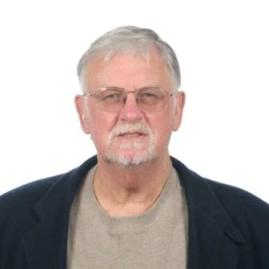|
Peter R. Griffiths, D.Phil. Analytical and Environmental Chemistry Professor
|
|||||||||||
|
Address: Department of Chemistry, Renfrew Hall, room 1
Professor Griffiths' research is centered on the application of vibrational spectrometry to the solution of problems of analytical, environmental and structural chemistry. The current projects that are being worked on by members of his research group include the development of a completely automated open-path FT-IR (OP/FT-IR) spectrometer, investigations into the theory and practice of surface-enhanced infrared absorption and Raman, the characterization of mid-infrared diffuse reflection spectroscopy and (in collaboration with the Bitterwolf group) the application of an ultra-rapid-scanning FT-IR spectrometer to photochemical inorganic reactions using stopped flow techniques. OP/FT-IR spectrometry involves the measurement of spectra of the open atmosphere over a path-length of 100 to 200 meters. Algorithms have been developed whereby bad data taken during very windy or foggy days can be automatically rejected. Measurements made at dairy and hog farms in Southern Idaho have allowed ammonia, methane and nitrous oxide to be simultaneously quantified down to concentrations of ~10 ppb at intervals of about 1 minute. We have also developed a method based on target factor analysis by which the presence of trace atmospheric pollutants can be identified at levels where their absorption bands cannot be seen in the spectrum. Using this approach, the presence of ethanol caused by anaerobic fermentation can be seen over manure lagoons. Once the presence of the analytes has been identified, they are quantified using multivariate quantitative algorithms such as partial least squares regression. Surface-enhanced infrared absorption (SEIRA) is a relatively new technique whereby the spectra of very thin layers of organic compounds are enhanced by interaction of the electromagnetic radiation, the vibrational modes of the organic molecules and the collective motion of electrons near the surface of small islands (surface plasmons) of silver or gold. We have made use of this effect to increase the sensitivity at which the molecules eluting from a gas chromatograph (GC) can be identified. We have reduced the detection limits of direct deposition GC/FT-IR measurements to the point that they rival those of GC/MS. The infrared spectra measured in this way allow the identification of compositional isomers much more accurately than mass spectrometry. Until very recently, it was believed that the only metals that gave rise to SEIRA were the coinage metals silver, gold and copper. However, we have shown that significant intensity enhancements can be achieved using metals as disparate as platinum and zinc. We are also carrying experiments to better characterize surface-enhanced Raman scattering (SERS). Preliminary experiments have indicated the detection limits of GC/SERS should be at least two orders of magnitude less than those of GC/SEIRA. As a result of these experiments, we are now attempting to build a GC/SERS interface with sub-picogram detection limits that has a volume of less than 1 cubic inch. In collaboration with a small business in Troy, ID, Manning Applied Technology, a new type of FT-IR spectrometer that allows the measurement of complete infrared spectra in 5 ms has been built. This instrument has been used to show the feasibility of monitoring very fast combustion reactions, to investigate polymer dynamics around the point of fracture and to measure the rate of fast adsorption of gases onto powdered adsorbents. We are now looking into the feasibility of measuring the mechanism and kinetics of photochemical reactions of inorganic complexes using stopped-flow techniques. This page was last updated on April 14, 2006
|
|||||||||||

